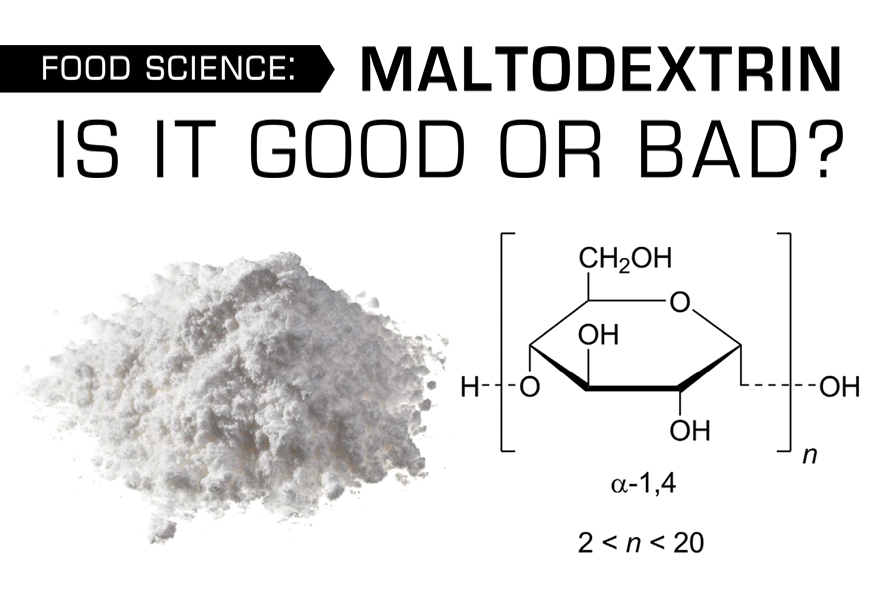Shelf stable food products in the supermarket have lots of unrecognizable ingredients in them. Many entrepreneurs are quick to say “I don’t want any of those chemicals in my food,” but they don’t bother to understand exactly what that item is. Many consumers feel that if they don’t know what the word means, it must be a dangerous cancer causing chemical.
Food entrepreneurs in the medible food industry space should research what some of the foreign sounding ingredients are. Lets start with “Maltodextrin.” Maltodextrin is wet corn or tapioca starch slurry that has been hydrolyzed (or broken down) by enzymes or food grade acids. The resulting syrup is then spray dried into a powder form and used in formulations. Maltodextrin typically has a DE, or “Dextrose Equivalent” number attached to it, like Maltodextrin-10 or Maltodextrin-20 (if your retailer doesn’t tell you what the DE is, then just ask). The DE stands for dextrose equivalence and is a quantitative measurement of the degree of starch polymer hydrolysis, which directly relates to its level of sweetness.
More starch hydrolysis means a higher DE, which means a sweeter product. Typical maltodextrin powders go up to about 20DE, after that higher DE’s are now classified as what we know and have seen in the supermarket as corn syrup. Corn syrup is not the same as High Fructose Corn Syrup which is a nutritive sweetener made of both fructose (45 or 55%) and glucose. Next time you buy corn syrup at the supermarket, notice that some manufacturers point out that their corn syrup does not contain high fructose corn syrup.
But how can you work with maltodextrins? Think about maltodextrin as a low sweet-ness bulking agent ingredient extraordinaire. It has a variety of amazing applications in baked goods, candy, dry beverage and cake mixes and protein powder blends. In the baked goods arena, maltodextrins can enhance texture and tenderness and it can bulk up frostings and glazes (but without all that sugary sweetness).
Maltodextrin is also used in reduced creamy fat fillings to enhance mouth feel, in other words, making lower fat items seem richer and creamier. In beverages, it acts as quick dispersing bulking agent. Blend in your flavor, color and citric acid into a drink mix with a maltodextrin and you will have a nice spoon-able and measurable powdery mixture to blend right into water. Maltodextrins can also help you disperse protein powders. Protein never really dissolves but it won’t be as clumpy if you pre blend it with a maltodextrin. In candy making, it can inhibit crystallization and improve candy “chewiness.” Lastly, the low hydroscopicity, bland flavor and instant solubility make it a great carrier for dry mixes (like cake and pancake blends).
Yes, maltodextrin is like a super ingredient. It adds bulk, controls sweetness, helps keep your product dry and even mimics fat. It is natural and there are some manufacturers that make it from tapioca, allowing you to honestly say it is not from GMO corn. Maltodextrin is available online from multiple sources—don’t be intimidated by a 50 lb. bag, its very light and fluffy and you will use it up quickly.
As you go higher up the DE ladder and start hitting corn syrup, keep in mind that corn syrup is also available in a powder form. Corn syrup powders (available online but not in supermarkets) are similar to maltodextrins but with much more sweetness (and they are more hygroscopic). Corn syrups are still not as sweet as sugar though, so keep that in mind when you formulate.
There is a world of unique and useful functional ingredients out there. Research them and give your medible products a competitive edge. Use the ingredients that the professionals use to make your product look and taste better.
_____________________________
Rachel Zemser is a certified food scientist. To learn more about her visit: theintrepidculinologist.com
RACHEL ZEMSER
STAFF EDITOR
